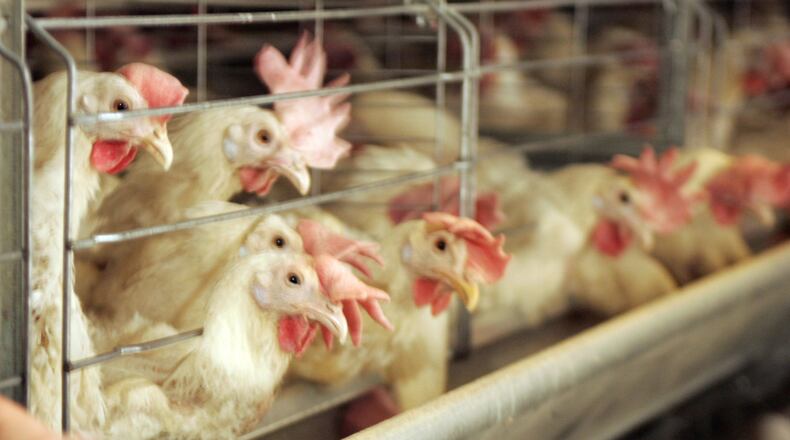“Poultry certainly is a big part of the agricultural industry in Darke County,” said Caden Buschur, agriculture and natural resources educator for Ohio State University Extension’s Darke County office. “It’s certainly having a tremendous impact on the area.”
In Darke County, there have been nearly 1.5 million cases reported since Jan. 9 involving nearly 700,000 egg-laying chickens, nearly 740,000 pullets — or chickens less than a year — and more than 57,000 turkeys. In December, there were HPAI cases at four facilities in the county involving more than 1.4 million egg layers and more than 48,000 turkeys, according to the USDA.
All of the cases in Mercer County have been reported since Jan. 14 and have involved more than 2.9 million layers and more than 26,000 turkeys.
Butler and Greene counties each had one backyard poultry site with confirmed cases involving 150 birds in November in Butler County and 85 birds in December in Greene County.
In all cases, the premises were quarantined and depopulated, meaning the birds were killed, to help prevent the spread of disease.
If a flock is infected with HPAI, the USDA provides compensation for some of the producer’s losses and costs. That amount is based on factors such as flock size and present-day values, said Bryan Levin, public information officer for the Ohio Department of Agriculture.
The USDA has reimbursement specialists who help with this process, he said.
Ohio is the second-largest egg producing state, behind Iowa. In 2023, Ohio produced more than 11 billion eggs. In the USDA’s 2022 Census of Agriculture, Ohio had more than 20 million broilers and other meat-type chickens, as well as 38.5 million layers and 11.8 million pullets.
The ODA follows USDA guidelines, Levin said, on cleaning and disinfecting and its cautions to the poultry industry about who enters its facilities and can be around the birds.
Buchur said part of his role is to provide education on biosecurity practices to help prevent HPAI’s spread.
“Even when following biosecurity practices it is a tough disease to stop,” he said. “Wild birds are thought to be a big contributor to the spread of the disease.”
After an outbreak and depopulation, Levin said regulatory staff conduct environmental sampling of the premises.
“Following approval from the ODA and USDA, restocking and production can begin,” Levin said.
Of all the cases reported in the region, only the two backyard poultry cases are reported closed. The rest are active, and the ODA said it does not release location information for active cases.
The risk of the disease to the general public is low, according to the Centers for Disease Control and Prevention.
HPAI cannot be transmitted through properly cooked meat or eggs. Products from any HPAI-affected flocks are prohibited from entering the food system. However, the ODA recommends proper handling and cooking of all poultry and eggs to an internal temperature of 165 F as a general food safety precaution.
Credit: AP
Credit: AP
About the Author


